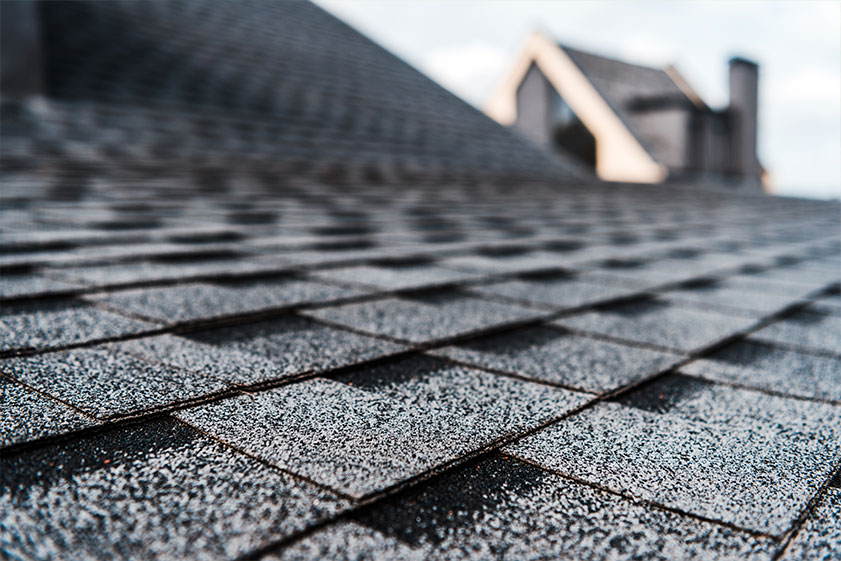
The prominence of roof shingles in the roofing world is undeniable and for some very convincing reasons. They strike a balance between cost-effectiveness, functionality, and aesthetic appeal, all while ensuring adequate protection for our homes. This comprehensive guide will help you through the pros and cons of different types of roof shingles to help you choose the most suitable one for your home.
Asphalt Shingles
Asphalt shingles are frequently the preferred choice when it comes to roofing solutions. Asphalt is a crucial ingredient in these shingles, and they involve two distinct base materials—organic and fiberglass. Organic shingles incorporate a paper base, whereas fiberglass shingles consist of glass fiber at their core. Given their durability and lighter weight, fiberglass shingles often outshine their organic equivalents, making them a favorite among homeowners.
The biggest lure of asphalt shingles is their pocket-friendly nature. They feature prominently among the most cost-conscious roofing alternatives and offer a plethora of options in terms of designs and colors, rendering them a near-perfect fit for a wide range of home types.
However, it’s important to address some misconceptions. Unlike older perceptions, modern asphalt shingles are far more durable and can be easily repaired over time. Wood and tile roofs may not fare well in the demanding weather conditions of regions like New Jersey and Pennsylvania. On the other hand, metal roofs, while gaining popularity for their trendy farmhouse aesthetic, tend to be expensive, challenging to repair, and can produce significant noise during rainfall. Therefore, when considering roofing options, it’s essential to evaluate whether the cost and aesthetic benefits of asphalt shingles, including solar roofing, sufficiently outweigh the potential drawbacks before making your final decision.
Wood Shingles
Wood shingles have been around for centuries, and they continue to be a popular choice for their timeless, natural charm. Many homeowners with rustic or Craftsman-style homes select wood shingles for their undisputed visual appeal. Standard wood shingle materials include cedar, redwood, and pine, with cedar as the most popular choice due to its remarkable resistance to decay.
While wood shingles come with a heftier price tag than asphalt, primarily because of the raw material and installation costs, they are worthwhile considering their durability. If maintained properly, wood shingles can easily last 30 years or even longer.
The major drawback of wood shingles is that they demand more maintenance than other types of roofing materials. Over time, they can warp and become susceptible to fire damage, especially if not treated correctly.
Metal Shingles
As a relatively new entrant in the roofing market, metal shingles have quickly gained popularity for their remarkable energy efficiency and impressively prolonged durability. They are highly resistant to damage caused by fire, rot, and insects. Common materials used to manufacture metal shingles include steel, aluminum, copper, and alloy strip.
One of the most significant advantages of metal shingles is that they can slickly mimic the appearance and texture of traditional roofing materials like wood or slate while offering the enhanced benefits of a metal roof. Although they might be more expensive upfront than asphalt or wood, their extended lifespan—around 60 years or more—makes them an appealing long-term value proposition.
Tile Shingles
Tile shingles have been framing the exotic allure of Mediterranean-style homes for centuries. A versatile choice, they can be molded in different shapes and sizes to fulfill most homeowners’ architectural inclinations. The primary materials used to produce tile shingles include ceramic and concrete, both of which guarantee impressive durability.
Tile shingles often carry a higher price tag, sometimes up to three times the expense of an asphalt roof. Their installation is also more complex and requires skilled professionals, which could further reflect in the overall cost. However, tile shingles’ robustness and expected life span—around 80 years or more—make them a valuable investment if you’re on the lookout for a long-serving roof.

 2022 Alte Roofing
2022 Alte Roofing 